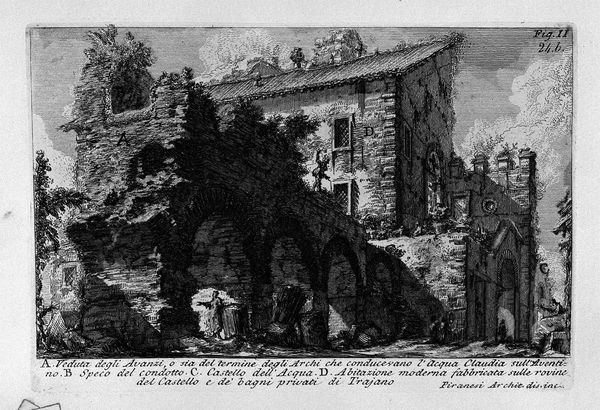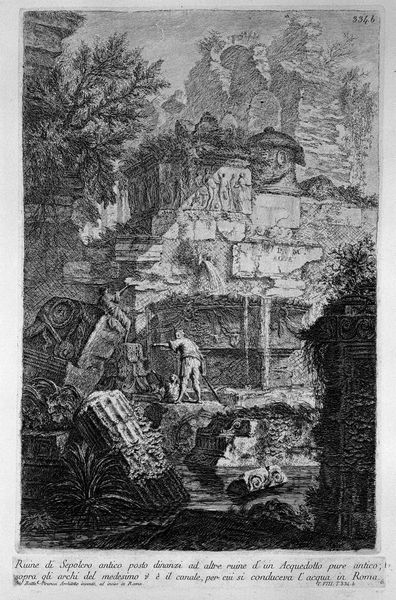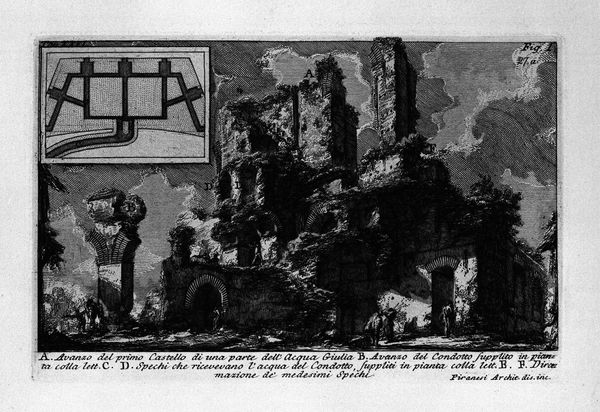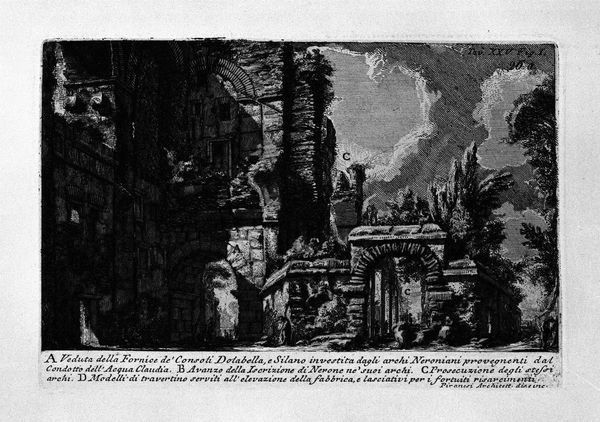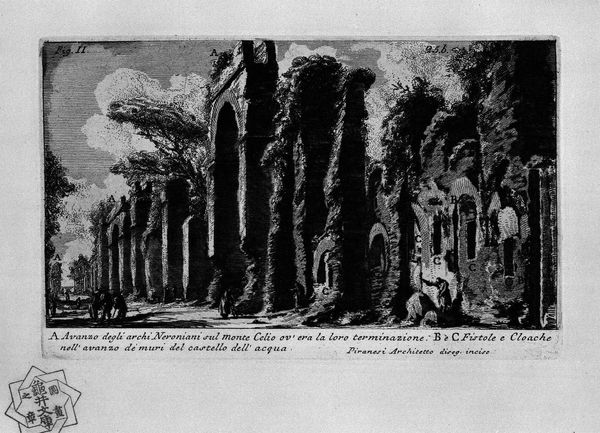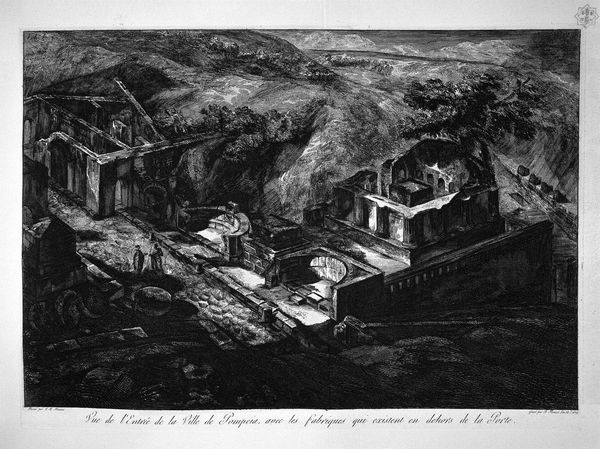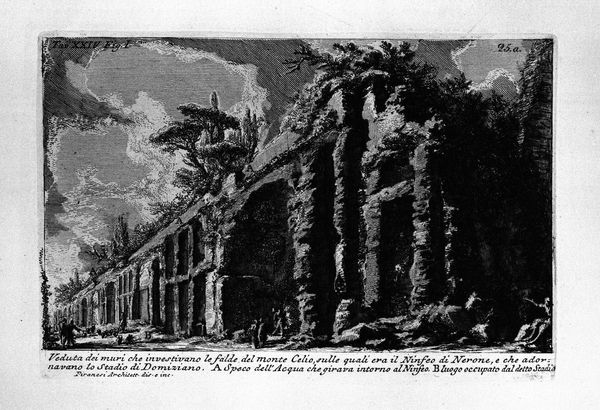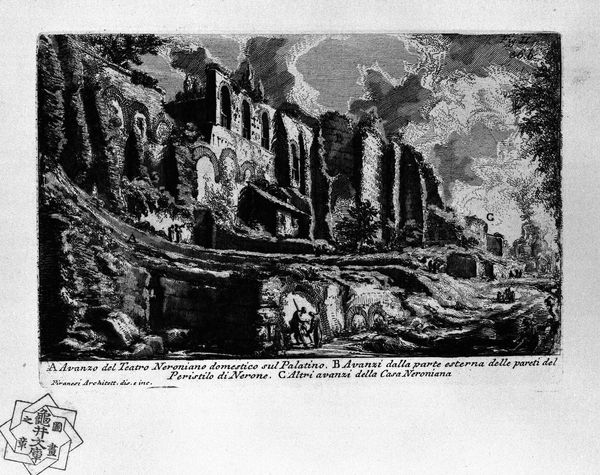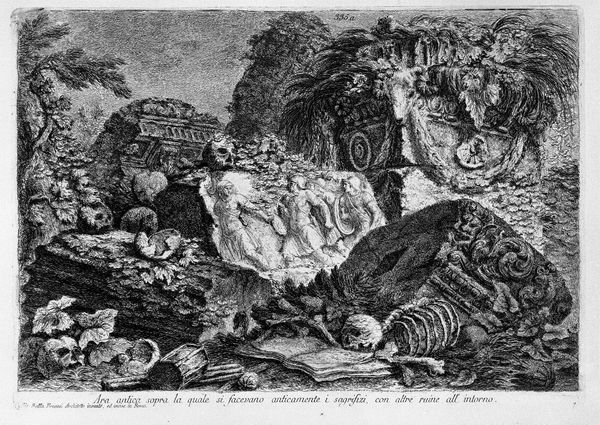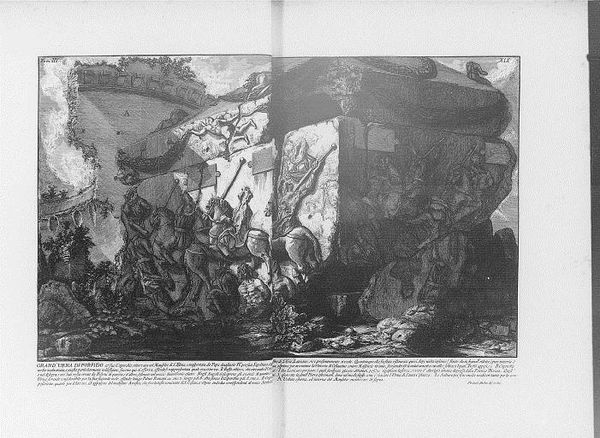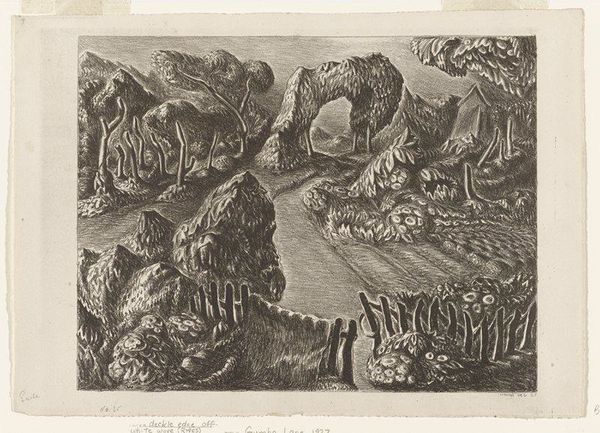
print, etching, engraving, architecture
# print
#
etching
#
carving
#
landscape
#
romanesque
#
column
#
engraving
#
architecture
Copyright: Public domain
Curator: Here, we're looking at Giovanni Battista Piranesi's "The Roman Antiquities, t. 1, Plate XII. Aqua Alsietina," an etching and engraving from 1756. The piece captures a fragment of the Aqua Alsietina aqueduct. Editor: Immediately, I’m struck by this incredibly somber feeling. It’s not just ruin; there's this… overgrown sense of abandonment and decay. It makes you consider time on a geological scale. Curator: I agree. Notice how Piranesi uses very fine lines to give a kind of archaeological specificity, yet still exaggerating scale and light. There is a push and pull in this scene. See how the aqueduct's structure dominates, but also notice how it's being relentlessly swallowed by nature. Editor: Right, and the aqueduct itself... Look at that meticulous rendering of the brickwork against the loose rendering of plant-life! It suggests something monumental yielding to chaos, really emphasizes the contrast of permanence and transience. Even the numbered annotations become like visual fossils marking the space. Curator: Indeed. The Romanesque architectural elements, like the arch, are still so proud despite their derelict condition. One cannot deny that in addition to documenting ruins, Piranesi offers up potent metaphors about human endeavors—their grandeur, and eventual fading from cultural memory. I find his manipulation of perspective almost theatrical. Editor: And perhaps a bit didactic. This engraving and others from that time sought not just to picture, but almost instruct the viewer on the themes of power, decline, and even our relationship to history as we see it reflected. There's a clear narrative being staged, where even viewers start asking how we deal with those remnants. Curator: I completely agree with that point; these ruins exist simultaneously in physical and metaphorical space, demanding contemplation. It is really powerful, considering it is just a black and white image. Editor: A thought provoking example. It seems, for both of us, it sparks a deeper reflection on humanity and memory.
Comments
No comments
Be the first to comment and join the conversation on the ultimate creative platform.
